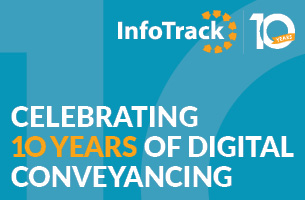Guest post by John Reynolds, head of disputes at Avonhurst

Reynolds: Progress will be slow
I don’t think I ever heard the phrase ‘client service’ while I was at law school (indeed, probably not for several years afterwards).
In respect of law firm fees, we were taught that these were based on ‘time cost’, reflecting the firm’s overheads, to which a mark-up was then added. Those bills were sent out at irregular intervals and clients would generally pay pretty promptly.
At some stage – probably in the late 90s, as Legal Business and other publications made us more competitive – the concept of client service took hold. We began using phrases like ‘we understand your business’, ‘we take a commercial view’, ‘we are responsive’ and ‘we go the extra mile’.
Unfortunately, the prevalent client service concept has been law firms’ view of client service, a concept with roots still firmly in the 20th century.
When I began in practice, each big City firm would have a group of household-name clients for whom that firm was the first, or possibly only, destination for legal work. The relationships were passed down through generations of partners; within the client (who, if they had a legal department at all, certainly did not have a lawyer overseeing litigation), the word was ‘our solicitors are [name of firm]’.
Those relationships have long since been eroded or disappeared altogether, often in favour of panels, subject to rigorous (and costly) procurement processes, run at regular intervals.
As for the billing process, law firms and clients alike adopted the US model of an hourly rate, which had taken a foothold in London through cross-border insurance litigation. Law firms grew, the number of associates multiplied, information mushroomed through rapid changes in technology and hourly rates continued in an upward direction.
As the hours and rates have increased, the hourly rate billing model remains the default position.
So, to use a phrase much favoured by politicians – who clearly studied the Sale of Goods Act at some stage – is the litigation service that law firms are providing to their clients fit for purpose?
If you feel uncomfortable answering that question, try this one: if you (litigation lawyer) invited your client to design a firm or department to provide the service they need, how closely would it resemble the environment in which you are now sitting?
Perhaps the only thing it would have in common is the presence of high-quality, hard-working lawyers, but it would almost certainly not have as many of them, and definitely not as many at the junior level.
Here are four areas where I would expect the client’s ‘21st century law firm’ to differ from the current norm.
Pricing
I doubt that anyone reading this article would be surprised that hourly billing would be towards, if not right at, the top of the list of things that a general counsel would change if shaping a 21st century law firm.
While transactions may be relatively brief in duration, litigation is generally a long and unpredictable process and the fear is that the law firm turns on the clock the second the case begins and doesn’t switch it off until that case closes.
Among the concerns are the rates themselves (which will commonly increase annually, as well as seeing associates step up to a different rate level each year, commensurate with post-qualification experience), the fact that time is recorded without reflecting the significance of the task or the efficiency of the lawyer involved, and the perceived inability to estimate the cost.
Attempts to tackle this usually centre on discounted rates, capped fees, estimates by stage of the case or fixed fees. For the law firm partner, a hard estimate (say it: fixed fee) exposes them to an overrun, whether through their own poor planning or the occurrence of something unexpected, resulting in a write-off or loss, even if it is one phase of a longer-running case.
The uncertainties of litigation, combined with the stigma within a law firm attaching to a perceived ‘unprofitable’ matter, make lawyers resistant to committing to fees without multiple qualifications and get-outs, such that the process can be effectively worthless.
The Bar has (largely) adopted the hourly rate model too, even though generations of clerks were skilled in estimating cost and value, and fixing a price in a way that is now regarded as better responding to client needs.
The client’s 21st century law firm would do away with hourly rate billing (and perhaps hourly rates altogether) and would implement a system that is predictable and reliable, as well as incentivising the firm to act efficiently.
Resourcing
Disputes develop at speed; there is often a need to react quickly and decisively, and the solution traditionally involves throwing bodies at the problem. This should not be a long-term strategy, though.
While the litigation process involves many tasks requiring large teams (some for prolonged periods), not all need to be staffed by lawyers.
This is most clearly seen in the area of document review where technology, in particular AI tools, reduces the need for time-consuming and costly human review and where, when human review is needed, we are accustomed to outsourcing the most labour-intensive stages to lower-cost teams outside a law firm.
Probably the area of greatest concern for GCs is resourcing with junior associates in the newly qualified to three years’ post-qualification experience range; they are alarmed at the sheer number of junior associates staffed on matters, as well as how they spend their time.
No GC wants to have to assign someone in their department to spend valuable hours each month scrutinising bills in order to understand the efficacy of the junior associates.
In response to this concern, more than one major investment bank I know of has designated junior associates as a law firm overhead for which they will not pay, and the situation has not been helped by the mainstream press coverage given to the salaries currently paid to newly-qualified associates.
At the other end of the qualification spectrum, there is value in the senior partner who can apply years of experience to help with strategy and oversight, or to deal with discreet, problematic areas of a case, whether as a full-time member of the team or as a consultant, brought in periodically.
In the client’s 21st century law firm, the emphasis would be on building a team for each case that is efficient and can be adapted and expanded as needed. This probably means a team that is leaner and not confined to solicitors, such as ‘embedded’ members of the junior Bar or lawyers from other jurisdictions.
Project management and reporting
Within many client organisations, project management is a fundamental part of a profitable business, particularly when it comes to monitoring major expenditures. Within the law firm, despite their skill in managing a case and the litigation process, litigators are not natural managers of cost.
It has been the clients driving the growth of professional project management of disputes. The need to justify and control legal spend within legal departments has led to the development of project management teams and the requirement in panel procurement and pitches for major matters for corresponding teams within the law firm to report.
If one has committed to a fee arrangement (however woolly it may be), it has to be managed against that commitment, otherwise there will quickly be an overrun, which is unlikely to be recoverable.
Despite this, project managers are not yet commonplace in litigation teams – indeed, there are probably not yet enough experienced litigation project managers in the London market to be able to satisfy demand. They too would be an essential element of the client’s 21st century law firm.
Co-operation
This is a matter of philosophy rather than structure. Litigation is an adversarial process but few clients relish the regular confrontation that is often regarded as inherent in that process.
How often is the inter-solicitor correspondence bundle at the heart of a trial? How many disclosure applications or disputes have secured the decisive material? The client’s 21st century law firm would place emphasis on the outcome, not the process.
Let us now turn the table. What about the 21st century client? There is probably one factor, more than any other, that would help to address many of the issues that currently arise between client and law firm during litigation – the quality of their relationship.
The erosion of strong bonds is a consequence of rising legal costs and the need to control it. A panel or matter-pitching system focused on the reduction of litigation spend drives law firms to discount their fees to unsustainable levels to win work. After all, an existing harmonious relationship may not be a factor that heavily influences a procurement process.
The resulting roster of law firms that a client has to manage can be unwieldy and, inevitably, the relationships are not as close as they once were.
Changing attitudes to client entertainment have also played their part. The concept of a trusted adviser is in short supply and facing one’s law firms off against each other every time a major matter comes up will not enhance the relationship.
It may not be easy, or even possible, to get this genie back in the bottle. The quality of a law firm relationship and its benefits are not measurable and so there is bound to be resistance to a reduction of competitive tension between legal advisers.
However, a trusting, long-term relationship will enable easy resolution of many of the hurdles which are encountered during a long-running dispute, particularly in relation to fees. It enables the law firm to take a long-term view, which could mean giving it the willingness to absorb cost overruns, with the reassurance that over time both it and the client will benefit.
Is all of this musing just the legal equivalent of putting together a fantasy football team? After all, law is not a profession synonymous with radical change.
However dissatisfied a client may be, major law firms will continue to be instructed on major matters and it does not yet feel as if either those law firms or clients are ready to take a knife to long-established structures and working practices.
In the best tradition of the profession, progress will be slow, incremental and driven by what is likely to be a relatively small number of law firms and clients that are willing to restructure the way they work, the rewards and their relationship. It is hard to conceive of a Big Bang moment. Or is it?
We have just emerged from a two-year period of enforced, office-distant reflection. Our clients faced numerous unforeseen challenges and found themselves working in ways that they would have dismissed, two years previously, as impossible for one reason or another.
Covid acted as an accelerator for change and, in my experience, clients have readily embraced new or unfamiliar ways of working. Why should law firms’ relationships with their clients be any different?
After a two-year shake-up, should we really be content just to return to the way we were working in early 2020?
Avonhurst is a new-fashioned law firm that provides legal services across deals and disputes, political advisory services and capital services. John Reynolds was formerly the head of White & Case’s London litigation department.












Leave a Comment